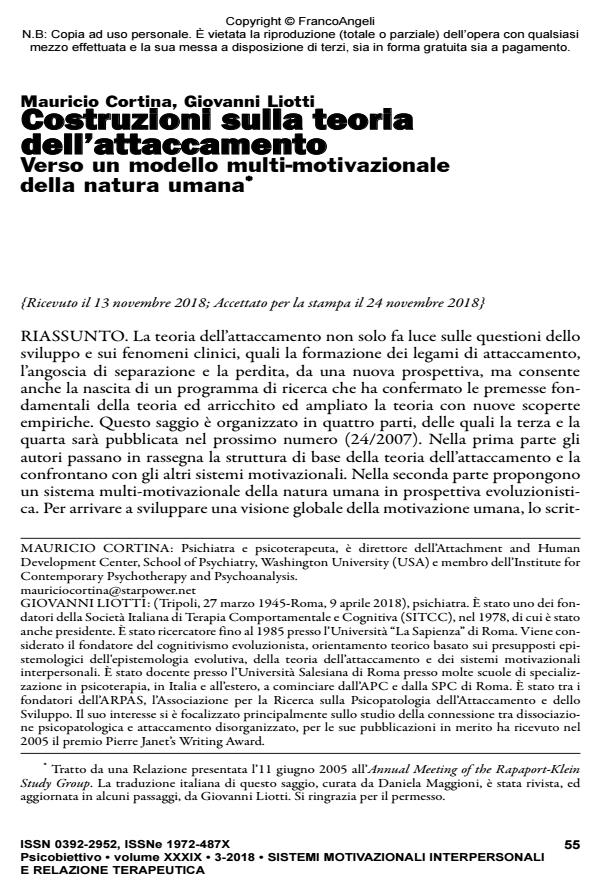Shaping the attachment theory
Journal title PSICOBIETTIVO
Author/s Mauricio Cortina, Giovanni Liotti
Publishing Year 2018 Issue 2018/3
Language Italian Pages 14 P. 55-68 File size 124 KB
DOI 10.3280/PSOB2018-003006
DOI is like a bar code for intellectual property: to have more infomation
click here
Below, you can see the article first page
If you want to buy this article in PDF format, you can do it, following the instructions to buy download credits

FrancoAngeli is member of Publishers International Linking Association, Inc (PILA), a not-for-profit association which run the CrossRef service enabling links to and from online scholarly content.
Towards a multi-motivational model of human nature SUMMARY. The Attachment theory not only highlights developmental issues and clinical phenomena, such as the formation of attachment ties, separation anxiety and loss, which are evaluated through new perspectives; it also generated a research program that has confirmed fundamental premises of the theory as well as enriched and expanded the theory with new empirical findings. This essay is organized in four parts, the third and the fourth will be published in the next issue (24/2007). In the first part the authors lay out the basic structure of the Attachment theory and compare it with other motivational systems. In the second part they propose a multi-motivational model of human nature proposing a taxonomy of human motivation in an evolutionary perspective. In order to develop a comprehensive view of human motivation, the essay answers two key questions: 1) What are the characteristics of our species that make us unique? 2) How do these emerging properties modify the foundation of the motivational systems that connect us to other mammals and primates?
Keywords: Attachment Theory; Motivational Systems; Multi-Motivational System; Evolutionary Perspective.
Mauricio Cortina, Giovanni Liotti, Costruzioni sulla teoria dell’attaccamento Verso un modello multi-motivazionale della natura umana in "PSICOBIETTIVO" 3/2018, pp 55-68, DOI: 10.3280/PSOB2018-003006